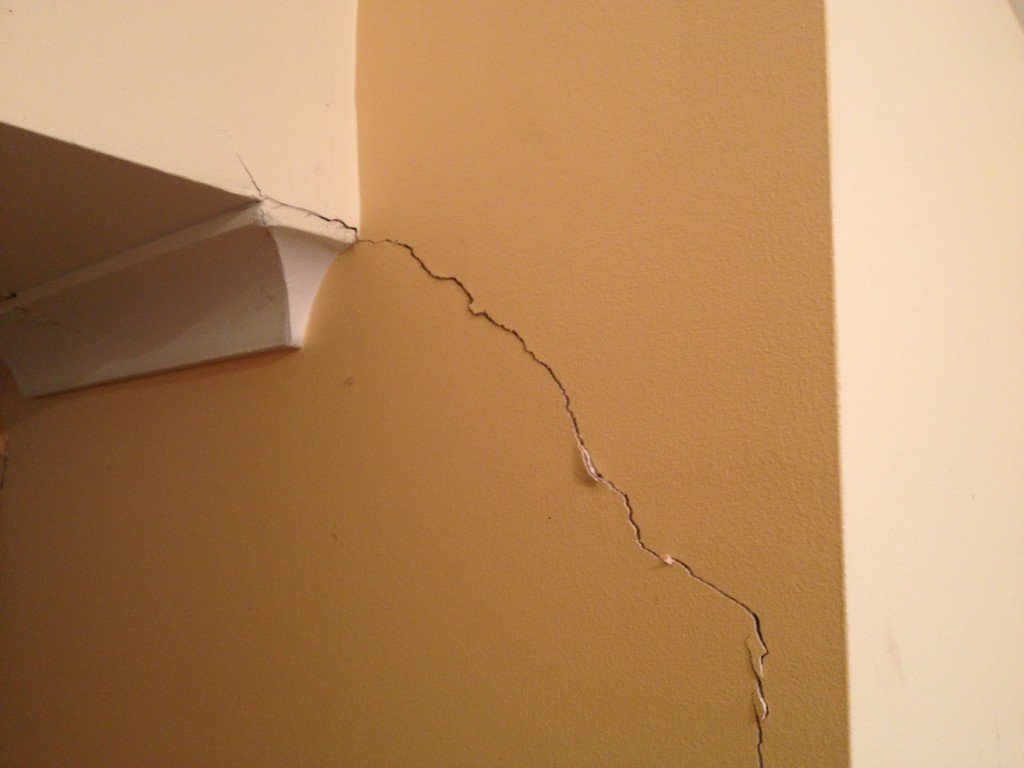Ceiling cracks can be worrying for homeowners, but not all of them mean there’s a serious problem. By understanding the types of cracks, their causes, and what to watch out for, you can decide when it’s time to act or when it’s safe to relax.
Let’sgo through the different types of ceiling cracks and when you should consider calling in a professional.
Types of Ceiling Cracks
1. Hairline or Spiderweb Cracks
These are the most common types of cracks and often appear as tiny, thin lines. They are usually caused by the house settling over time or by changes in temperature and humidity.
While they might look concerning, they’re typically nothing to worry about unless they spread or become more noticeable. A quick repaint is often all that’s needed.
2. Straight Cracks
Straight cracks often form when there has been poor drywall installation. They may run in a straight line, usually along a seam where two pieces of drywall meet.
These cracks are generally cosmetic and don’t indicate any structural issues. However, if they start to widen or if you notice other signs of damage, it might be time for a closer look.
3. Discoloured Cracks
If the cracks are brown or yellow, it’s likely a sign of water damage. This could be due to a leak in the roof or plumbing issues above the ceiling.
Discoloured cracks should be addressed straight away to prevent further damage, such as mould growth. Finding and fixing the source of the leak is crucial before repairing the ceiling itself.
4. Cracks Between Walls and Ceilings
Cracks that appear where the wall meets the ceiling are often due to truss uplift, a common occurrence in homes. Trusses (which are roof supports) may lift slightly, causing this type of crack.
It’s usually not a structural concern unless you notice other problems like sagging or uneven areas. If in doubt, have a professional take a look.
5. Bowed Ceilings with Cracks
If you see cracks along with a sagging or bowed ceiling, this could be a sign of a serious foundation issue. In these cases, it’s best to seek professional advice right away, as this type of problem could affect the structural stability of your home.
When Should You Be Concerned About Ceiling Cracks?
While some ceiling cracks are minor and easily repaired, others might indicate more serious issues. Here are some warning signs that you may need to act on:
- Cracks Wider Than 5 mm: Cracks that are wider than 5 mm could point to a structural problem. If you can see a gap or if the crack appears to be growing, it’s a good idea to consult a building professional to check it out.
- Multiple Cracks Across Different Areas: If you notice cracks in multiple parts of your ceiling or if they extend down the walls, this could suggest a problem with the foundations of your home. Multiple cracks appearing at once is a sign that you shouldn’t ignore.
- Signs of Structural Movement: Keep an eye out for other signs like uneven or sagging floors, doors that are hard to open or close, or visible cracks in the foundations outside. If you notice any of these alongside ceiling cracks, it could mean that your home is shifting, which might require structural repair work.
- Recent Earth Tremors or Heavy Rain: In Australia, earth tremors or heavy storms can cause ceiling cracks or make existing ones worse. If you’ve experienced one of these events recently, it’simportant to check your ceiling and walls for any changes.
What to Do Next
If you notice any of the above signs, it’s wise to call a professional building inspector or a ceiling repair service to assess the situation. Early detection and repair can save you from more costly problems down the track and ensure your home remains safe.
On the other hand, if your cracks are small and haven’t changed over time, they’re likely harmless. In these cases, a simple patch-up and repaint should be enough.
Ceiling cracks are a common issue, and while some are purely cosmetic, others may signal bigger problems. By understanding the types of cracks and when to take action, you can keep your home safe and avoid costly repairs.
Keep an eye on your ceilings, especially after a big storm, to spot any dramas early and keep your home in top nick. If you’re not sure about a crack or any dodgy-looking spots, it’s best to contact Southern Ceiling Repairs for a proper look-see and some expert advice.
Staying on top of small issues now can prevent larger problems later. Concerned about a crack in your ceiling?
Contact them today to keep your home safe and sound!


